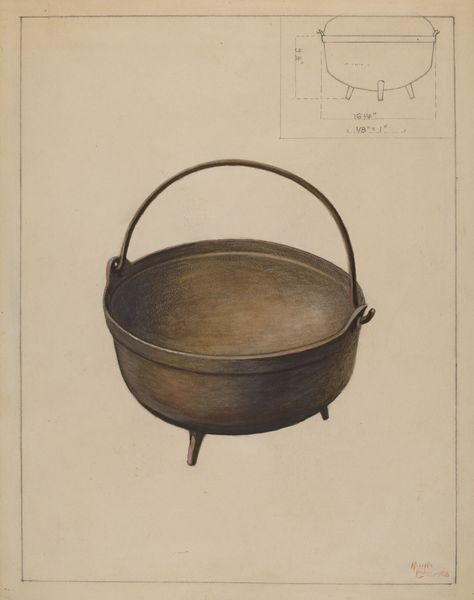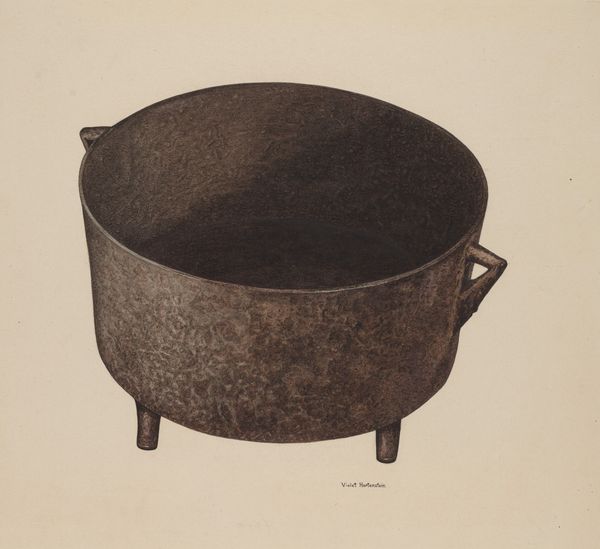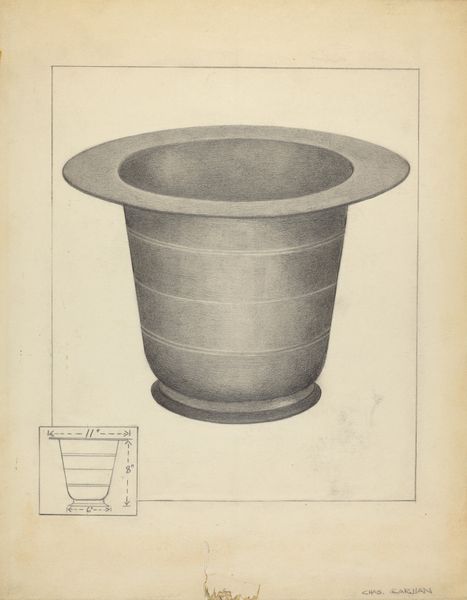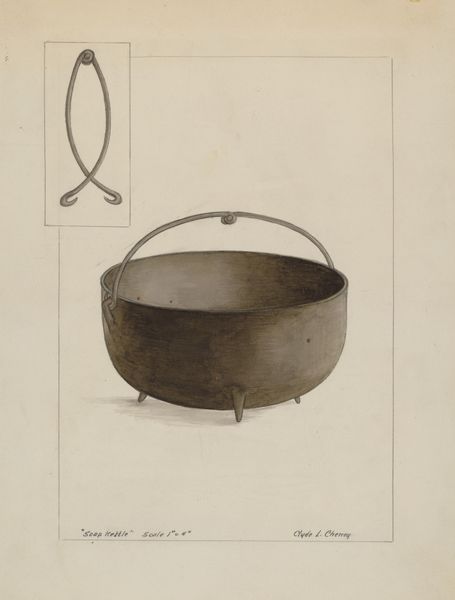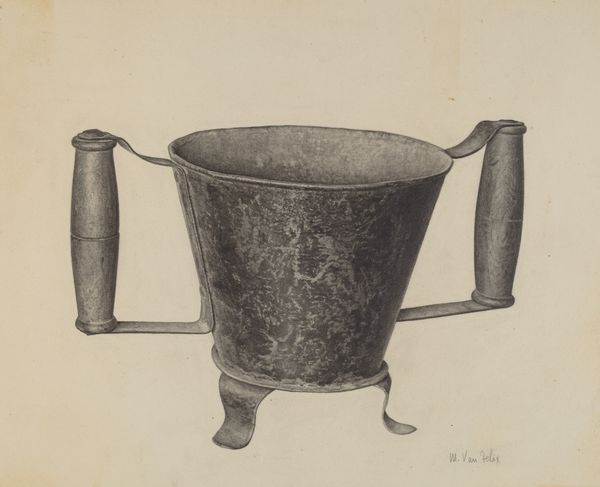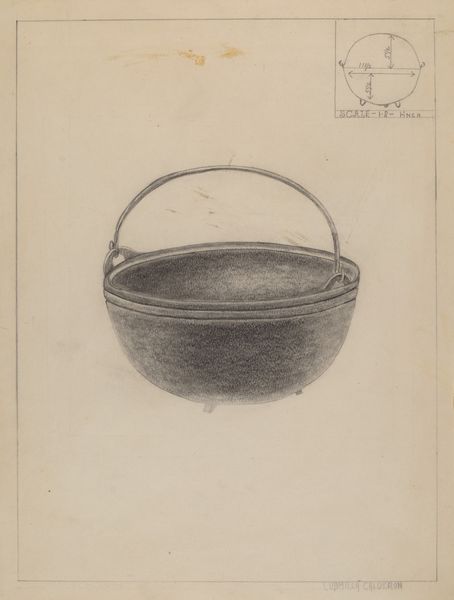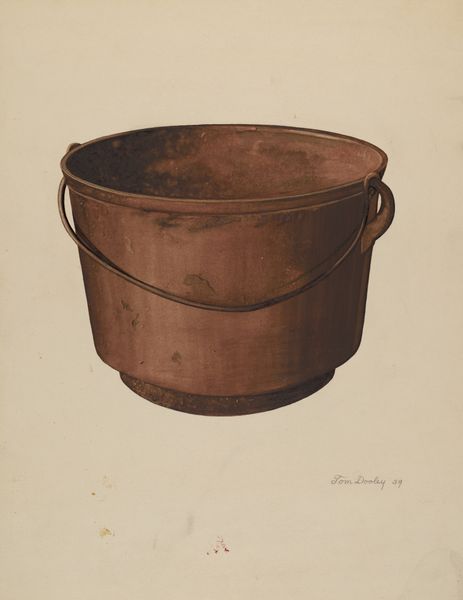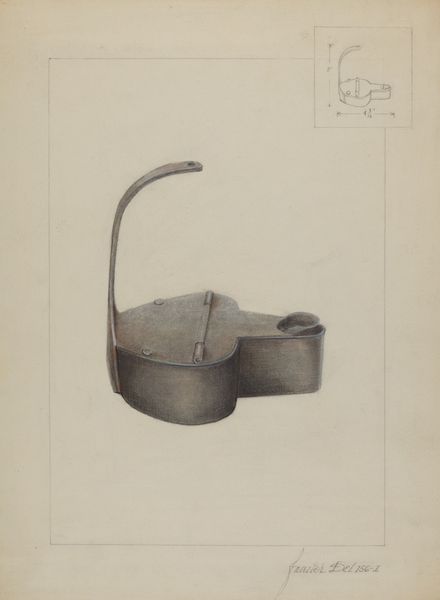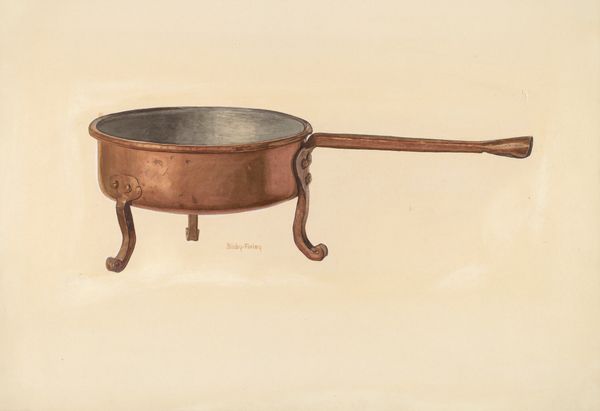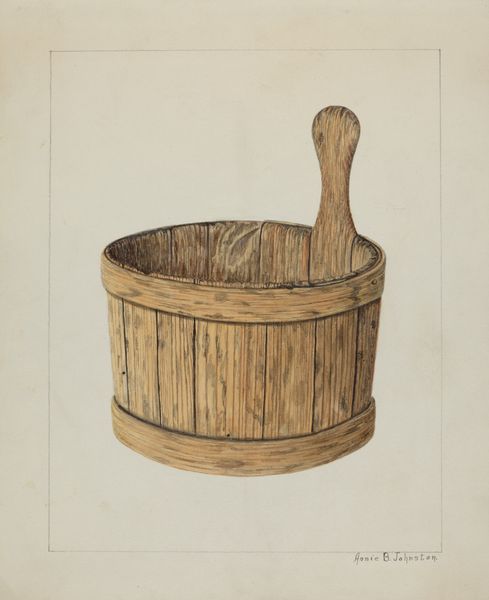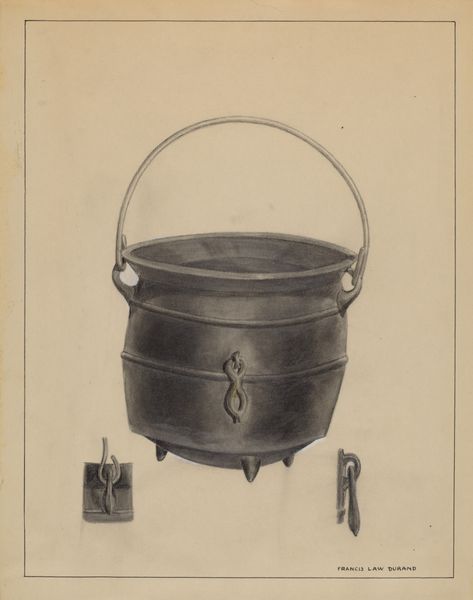
drawing, watercolor
#
drawing
#
narrative-art
#
charcoal drawing
#
oil painting
#
watercolor
#
watercolour illustration
#
academic-art
Dimensions: overall: 30.5 x 22.8 cm (12 x 9 in.) Original IAD Object: 12" in diameter; 11" deep
Copyright: National Gallery of Art: CC0 1.0
Curator: Before us is a watercolor and possibly charcoal drawing entitled "Cooking Pot," created around 1936 by Ludmilla Calderon. It's part of a narrative art collection. What are your initial thoughts? Editor: It has a surprisingly weighty feel for watercolor—almost like a preliminary study for a sculpture. The color palette gives it a primitive, almost alchemical quality. Curator: Indeed. It's interesting how Calderon combines watercolor with possibly charcoal for a precise yet somewhat illustrative style. The addition of what appears to be scale markings adds a functional dimension, hinting at its design or reproduction. I see it sitting squarely between art and functional documentation. Editor: Precisely! It's crucial to recognize that cooking pots aren’t just utensils. Historically, they're potent symbols, especially for women and marginalized communities. This pot silently speaks of labor, nourishment, and perhaps even survival in difficult times. Is Calderon consciously engaging in those intersectional dynamics? Curator: It makes one wonder about the specific socioeconomic context in which it was created. What would the intended use have been—design purposes for the Farm Security Administration? Editor: The composition guides our reading. Positioned at eye level, it denies a sense of superiority. Also, by being devoid of action or other figures, it becomes a symbolic carrier. What kind of narratives might be related to this container? Curator: Perhaps ones rooted in craft traditions, skill sharing, and communal sustenance. I also see that it highlights how utilitarian objects such as this can reflect complex layers of production, skill, and social life. Editor: Right—it begs us to analyze the complex interplay of form, function, and gendered labor that this piece implicitly addresses. It transcends the ordinary and turns into a potent symbol loaded with untold stories. Curator: Indeed. Through examining these seemingly mundane details, we arrive at much deeper appreciation of artistry and object history. Editor: It serves as a gentle reminder about how the everyday embodies histories. The power of objects, especially those used in intimate or communal life, lies in their capacity to represent complex lived realities.
Comments
No comments
Be the first to comment and join the conversation on the ultimate creative platform.
